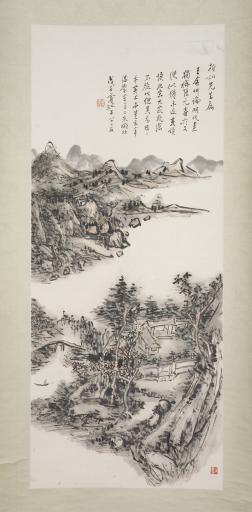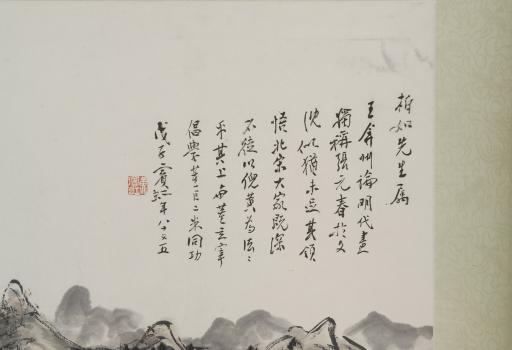Landscape, Huang Binhong
Artwork Overview
Huang Binhong, artist
1865–1955
Landscape,
1948, Republic of China (1911–1949)
Where object was made: China
Material/technique: ink; color; paper
Dimensions:
Image Dimensions Height/Width (Height x Width): 96.1 x 40.4 cm
Image Dimensions Height/Width (Height x Width): 37 13/16 x 15 7/8 in
Mount Dimensions (Height x Width x Depth): 204 x 55.4 cm
Mount Dimensions (Height x Width x Depth): 80 5/16 x 21 13/16 in
Image Dimensions Height/Width (Height x Width): 96.1 x 40.4 cm
Image Dimensions Height/Width (Height x Width): 37 13/16 x 15 7/8 in
Mount Dimensions (Height x Width x Depth): 204 x 55.4 cm
Mount Dimensions (Height x Width x Depth): 80 5/16 x 21 13/16 in
Credit line: Museum purchase: Gift of Mrs. Frederic James and Mrs. John B. McKittrick by exchange
Accession number: 1982.0346
Not on display
If you wish to reproduce this image, please submit an image request






